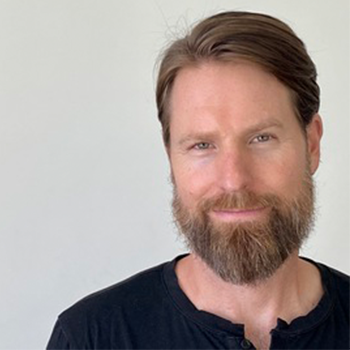george grombacher 0:02
Well blood for this George G and the time is right welcome today’s guest struggle powerful Nisha despond de Aneesa. Are you ready to do this?
Anissa Deshpande 0:09
Yes, I’m ready. Let’s go.
george grombacher 0:11
Let’s go. This is a former HR executive who successfully hired over 20,000 people across 150 countries. She’s now helping leaders become more effective and lead organizations with great cultures and create great environments where people love to work. She is the principal of Logue lab, and her newest book is the comeback. Nisa excited to have you on, tell us a little about your personal lives more about your work, why you do what you do?
Anissa Deshpande 0:39
Yeah, well, um, as I mentioned to you, I am a California native born and raised, I went to school up in Berkeley came back down to LA where my roots are, and had been here since I have about 30 years of experience, gosh, that makes me feel so old, 30 years experience in HR, IT finance and strategy. And for the last eight years, I’ve been primarily focused on modern leadership and running an executive coaching business, helping leaders really modernize their approaches, or the world we live in, as you know, the working world is becoming more and more complex every day. And I think leaders have a tall order. And so really helping them think through that and being the best leaders that they can be.
george grombacher 1:22
So modern leadership, what does that mean?
Anissa Deshpande 1:28
Well, and one of the things I tell companies and leaders, particularly today is the number one thing that is actually killing businesses is leadership. And specifically, its leadership teams. And what typically happens is a CEO hires an amazing group of leaders, really talented folks. But then he or she fails to unify them and get them aligned to what they’re trying to achieve as a business. Right, if they don’t create that first team principle, they’re not advocating for the company over their specific functions. And that causes a lot of internal friction, turmoil. And actually, I believe that’s a lot of the cause of burnout at the lower levels of the organization, because people are constantly competing for the same resources, and fighting about priorities and not really aligned to what the company needs to achieve to be successful.
george grombacher 2:24
So perhaps, CEO hired great people, but unfortunately, too often, they become siloed, and are just trying to get as many resources for their group as as they can to accomplish what they perceive to be their mission, instead of making sure that we are being mindful of moving the entire enterprise forward.
Anissa Deshpande 2:48
That’s right. And I compare it a lot to sports teams, right? You can have amazing talent on a sports team, you can have the best talent in the world. But if the coach isn’t aligning the team executing the right plays, there’s no way that’s going to be a winning team. And you know, taking it a step further, if you have amazing pitching, but you know, you lose the game, it doesn’t really matter, right? And when we apply that same concept to companies, I see so many leaders say, well, it wasn’t me, it was sales that didn’t do their part, or it was ops, it didn’t do their part, or was HR that didn’t do their part. Well, if not everyone’s doing their part to achieve that goal. There’s no way the company can win.
george grombacher 3:31
You know, I think that, as I look out across just the United States in general, it seems like we’re sort of slipping into that trap, kind of as well.
Anissa Deshpande 3:44
Yes. Examples of great leadership are hard to find anywhere you look these days, right? We just we don’t have them in, you know, I don’t want to get political, but we’re seeing the same issues come up in the government, we’re seeing the same issues come up in corporations. And this is something that we have to address. How do we get people aligned to achieve a certain goal. And while I can’t fix government, I can certainly fix corporations and help with those types of leadership issues. And that’s what I do. So I have a program that I call the modern CEO program, which is a six month program that helps a CEO align their leadership team. And the first thing we do is really define a 12 month what we call, endzone goal, or TrueNorth are something that everyone can align to. And it’s got to be crystal clear. It’s got to be very compelling and something people can remember as they’re doing their day to day work. And so we define that, then we assess the team and we make sure that we’ve got people that can actually be company leaders, and then we work with the CEO to help coach those leaders to be that amazing leadership team that they need it to be and it trickles down to the rest of the organization because everyone is aligned
george grombacher 5:03
Is it hard, easy? Is it very coming up with that TrueNorth
Anissa Deshpande 5:08
it’s hard. Because most most CEOs you talk to you will tell you Well, everybody knows what the goal is to share, it’s to grow revenue, right? It’s, it’s to penetrate strategic accounts. So getting to that TrueNorth really takes time, it’s gotta be specific enough that people can align around it, but not so specific that it becomes corporate jargon or too long for people to remember. So, yeah, that we spend a good chunk of time, usually about one to the first two months of the program really coming up with that TrueNorth. And, you know, my coaching program is a lot like having a personal trainer, I was just talking to somebody about this, an hour ago, actually, you know, you really get the results that you when you put in the effort. And so you’ve got to be committed to making real change to hearing what you what you need to hear, not what you want to hear and to putting the work in to get this running, it’s got to be a top priority for you in order to be successful. But too often, if you’re not intentional about this, I mean, I have not seen a leadership team, not be intentional about this and be successful. And sometimes you see in some of these teams, where they’re not being intentional, you find a lot of low grade bonding a lot of people, you know, having meetings after meetings, complaining to the CEO about various things, right? Thinking that their sides on a team. And so those are the types of things that you want to avoid. And that’s where a modern CEO really needs to get ahead and align his team to execute those plays and to win the game.
george grombacher 6:43
That’s a really good and important stuff there. low grade bonding. I don’t know that I’ve ever heard that term. But I can actually, I can see the conversation afterwards. It’s, you know, it’s email afterwards. Yeah. Which is evidence that we’ve not done the work that we wanted to do in our meeting.
Anissa Deshpande 7:05
That’s right. And that that’s what where the time set comes in. And it’s actually even an energy drain after a while, like, low grade binding is one of those things that feels good for a few minutes. But after a while, it actually takes more energy from you, and it leaves you with less energy, right? It leaves you rains, it’s almost like an energy vampire. And so you know, we want to make sure that we are getting those issues resolved in an open transparent way. We’re having the right conversations, everyone understands why we’re doing something as a company, because it makes sense for that company goal that we’re trying to achieve.
george grombacher 7:40
I imagine that this is something that we have so many blind spots, and we follow predictable patterns of behavior. And we do things the way that we’ve always done them. So very beneficial to have somebody come in with a fresh set of eyes and know, none of those things.
Anissa Deshpande 7:59
Right? Well, a lot of times too, I hear from CEOs, like I hire great people, and I get out of their way. I’m sure you’ve heard that from a lot of folks, I think that is a very traditional leadership, Mantra leadership technique. But I think in today’s world, that just doesn’t work anymore.
george grombacher 8:16
Is it trust, but verify? I don’t mean to throw cliches at you. It’s, it’s,
Anissa Deshpande 8:23
it is it’s a line. That’s what I’m gonna call it right. It’s getting aligned, it’s having those conversations as, as a team and figuring out what needs to get done as a team. And sometimes that means that I give up some resources, because sales need the sales needs, those resources, more ops needs, those resources going depend, depending on what the problem is, right? So it’s coming in with a mindset of I want the company to achieve its goals. And I understand I’m a part of that I advocate for my function, but I make the decision for what’s right based on what the company needs, not based on what I need.
george grombacher 9:04
So once you’re able to help an organization create that compelling vision, the true north, and the next step is assessing the team members. I bet that’s a little tricky, right there, your head turns out your head of marketing has been with you for 15 years, but
Anissa Deshpande 9:24
you’d be surprised at the number of people that don’t have the ability to operate at the company level. Right? It really separates those company leaders from those that can only advocate for their function. And the CEO usually knows in the back of his head that this person hasn’t been right for a bit of time, but they can’t figure out why. Right? Like there’s just something that they can’t articulate as to what the problem is. And so the next exercise that we go through to assess a team we give team members very specific feedback for what they need to do the CEO coaches and this is up to him to coach them and have those direct and clear messages, I mean, I help the CEO craft and that he goes in and has the kind of conversation. And then we see what they can do we give them clear progress measures, we see if they’re able to make that transition from a functional leader to a company leader. And sometimes, you know, it takes a little bit of coaching and they get there. And sometimes, you know, their, their best off is being a number two and a function not being the functional leader at representing the function at the leadership table.
george grombacher 10:31
So did you say functional leader to company leader? Or did I cross those up? Nope,
Anissa Deshpande 10:37
you got it? Right. So, you know, one of the things we ask the CEO to do is to evaluate whether someone is operating purely as a functional leader, or as a company leader representing that function.
george grombacher 10:49
Got it? That’s a really important distinction.
Anissa Deshpande 10:53
It is, it is. And you’d be surprised at how often we have to do some real coaching in that area to get people to where they need to be.
george grombacher 11:05
Or get rid of them.
Anissa Deshpande 11:06
Yes, or get rid of them? Hopefully, we can catch them.
george grombacher 11:12
Yeah, is do you find that most people are? It’s it varies? I’m sure.
Anissa Deshpande 11:18
It’s 5050. Yeah, I mean, it, you know, it’s like anything else? Sometimes it varies, because it depends on how the person landed in the role and how they’ve been showing up. And sometimes, you know, and how long the company has enabled behavior that isn’t consistent with where you’re trying to go.
george grombacher 11:38
So, okay. CEOs ability to coach the team, what he or she says, I am not a coach, I’m, I’m the CEO.
Anissa Deshpande 11:49
Yeah, a CEO is a coach, right? That is their number one role. And actually don’t get that as often as I get why I’ve been coaching them, and I’m not, it’s not working. And then sometimes we need to bring in like, I’ll need to coach the person directly, or will need to bring in somebody else to coach them through it, because sometimes that outside perspective is what’s needed.
george grombacher 12:14
Yeah. And I guess it’s not, it’s not obvious to me that. Perhaps I’m always, always telling me that I’m wrong. And this is it. I mean, having a conversation and feeling like you have rapport with somebody, and you’re getting through is not necessarily the same as actually coaching and having a system or process.
Anissa Deshpande 12:38
That’s right. And you know, you can have, you need to see the results at the end of the day, right. And you need to be able to give them actionable things that they can take, make into their own and execute on. And so, you know, I think a CEOs role is to coach where they can, but to identify when the coaching needs to happen from somewhere else, right to get them the resources that they need to be successful. And sometimes the CEO can do that. And sometimes they need an external, an external resource to do that. And so that’s part of the evaluation that we go through. But you’re investing a lot in this leadership team, right. And so getting someone a coach is, you know, giving them a chance before letting them go, is really a good investment. There’s a ton of institutional knowledge, typically, right? It’s usually something that we can that a coach can help figure out or at least give some guidance as to, hey, I think this person can get there or not. And it’s an outside person coming in and giving you another evaluation of the leader and his or her capabilities.
george grombacher 13:43
I appreciate that. How often do you encourage organizations at the end of of of your six month, process or program with within your organization? How often do you say, this is when you need to revisit what that TrueNorth is?
Anissa Deshpande 14:00
Yeah, I tell them to revisit the TrueNorth on an annual basis, at least most most companies do it as part of if they have a strategic planning exercise or an operating plan exercise on an ongoing basis. They’ll do it as part of that. And just make sure because I think you need something fresh every year. There’s new trends coming into the market, there’s new things that you have to navigate. And so it should just be part of what you’re doing from an overall planning perspective.
george grombacher 14:28
Got it? And how do I know if my organization is ready for your process?
Anissa Deshpande 14:35
Well, I think if you are not seeing the business results that you’re looking for, if you’re noticing that people get along really well with you, but maybe don’t work well together as a team, if you’re seeing people advocate for their function over the company, or if you simply don’t have that TrueNorth I think that’s a time to reach out and give me a call and see if it’s Something I can help with.
george grombacher 15:01
I like it. Well, and Lisa, thank you so much for coming on where can people learn more about you? How can they engage with you? Where can they get a copy of the book, the combat? Yeah,
Anissa Deshpande 15:10
so you can find me on LinkedIn and Isa just find a, you can also check out my website, the low glob the low blab.net, th, E, l, o, G, l, a, b. And, and you can check out the book on the Amazon, it’s called the comeback. And it’s, it’s a little more about HR, but it’s got a coaching component to it. It’s how a company transforms the people aspects of their business to achieve their revenue goals. And they go they work with a coach so you can kind of get a sense of the coaching style that I use. So it is a fictional novel, but it’s very much I think it’s called Corporate fiction is the genre that we that we use nowadays for that type of novel. But yeah, it’s it’s a fun read. It doesn’t take long. And if you like baseball and beer, it’s a really great book. Awesome.
george grombacher 16:02
I love it. Well, if you enjoyed as much as I did, show a nice to your appreciation and share today’s show with a friend who also appreciates good ideas go to low lab.net. It’s l o g l a b.net. You could find a new set on LinkedIn. It’s a NISSADSH pa N D E, and check out everything she’s working on and get your copy of the comeback as well. I’ll link that in the notes of the show. Thanks gonna Lisa. Thank you. And until next time, remember, do your part by doing your best
Transcribed by https://otter.ai





